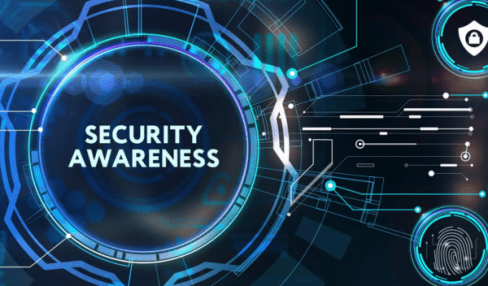Protect Your Business With These 21st-Century Digital Fraud Preventative Measures
4 Mins Read
Published on: 11 March 2022
Last Updated on: 08 November 2024

toc impalement
Entrepreneurs, executives, and managers often wear many hats to ensure the effective functioning of their businesses. They are constantly scrutinizing potential threats to their organization. They may, however, overlook online dangers in the process. Such ignorance is not affordable and may turn out to be a nightmare for the business.
Digital fraud and scams can cost companies money and tarnish their reputation. Companies can also lose sensitive client data, consumer confidence, and, ultimately, their customers. As a result, it is critical to be proactive and prevent digital fraud. Here’s how to escape becoming a victim and defend your company’s image.
Digital Fraud Mitigation Strategies for Businesses
As digital technologies evolve over time, digital frauds and deceptions get more complex and difficult to track. That’s because cybercriminals are becoming more proficient at identifying and exploiting security flaws in various settings, including authentication, online payments, applications, networks, and so on. However, you can strengthen your company’s digital security and keep fraudsters at bay using the practical methods listed below.
Related Resource: Top Tips When Planning Your Security Strategy For Your Small Business
1. Implement Digital Identity Verification

Most consumers prefer to shop virtually in the digital era and ingest online information, ditching traditional physical shopping and purchasing options. The digital front door limits in-person encounters. Consequently, your company may be a victim of aggressive scammers looking for easy targets online. They may impersonate other individuals and commit fraud. That is why digital identification verification of customers is a must for any online business.
You’re probably wondering what digital identification verification is. Digital identity verification is a means of confirming the true identity of customers/clients. The method provides reassurance to businesses that they are lawfully communicating with genuine consumers.
It is advantageous when a consumer engages for the first time, whether by purchasing a product, signing up for a service, filling out a form, or interacting in other ways. In this way, cybercrimes like account takeover and setup may be reduced. A higher level of security guarantees a positive client experience on-site.
So, apply this process in your organization to swiftly detect and eliminate digital scammers. With so many online solutions available these days, choosing the right verification process to employ might be tricky. Fortunately, we have done all of the legwork to make things easier for you.
You can use a solution like the one available on au10tix.com. It’s a quick approach that transforms countless human images, identification papers, and statistics into verified, all-access permits to your products, services, and experiences.
2. Safeguard Bank Accounts
It is best to maintain a separate corporate and personal bank account and credit card. That way, if a hacker hacks your corporate account, your account is protected, and vice versa. You should create a stringent employee reimbursement program as well.
For example, assign each one a credit limit and instruct your bank to send an alert if they exceed the limit. Also, choose digital bills over physical bills to avoid putting vital banking details in the incorrect hands.
It is also critical to investigate the bank’s security policy. If you suspect your bank’s security system is inadequate or if you discover anything else to suspect, move to another bank with better digital protections like an automated log-out system.
4. Conduct a Security Risk Assessment

It’s hard to protect the organization when the management is ignorant of security flaws. As a result, ask your cybersecurity professionals to conduct a security risk assessment, identifying areas of concern and resolving them as soon as possible. When such weaknesses are addressed, fraudsters are less likely to cause harm to your firm via digital means.
For example, they may steal your company’s sensitive data and demand a ransom in exchange. What assurance do you have that they will hand you all the data even after paying the money? You may end up losing money along with the data, brand reputation, and consumers. As a result, a security audit will aid in reinforcing the company’s security network against cyber threats.
5. Establish an Effective Password Policy

You and your staff may be accessing several sites that contain personal information. The site might be anything from a bank portal to a communication forum. It’s, therefore, crucial to develop a company-wide password strategy disallowing the fraudsters to have your company’s password at their disposal.
Create lengthy, distinct alphanumeric passwords and warn your employees not to share them with anybody within or outside the firm. Additionally, wherever feasible, utilize two-factor authentication for added security.
Final Take
Every organization is vulnerable to fraud, and it is practically difficult to safeguard against all types of fraud. However, if you implement these actionable measures for your organization, it may withstand digital assaults. Moreover, your company’s integrity will stay intact, and you will not lose loyal customers to competitors due to digital cheating.
Read Also:


















Comments Are Closed For This Article